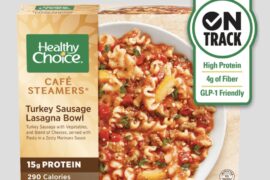The Pandemic-Fueled Growth of Frozen Foods, a new report from Jacksonville, Florida-based Acosta, details the increase in frozen food sales over the past year due to evolving consumer demand stimulated by the impact of the coronavirus (SARS-CoV-2) health crisis in the USA. Acosta’s research found that produce, pizza, snacks and entrees were the among frozen food products that have been purchased more frequently since the outbreak of the deadly Covid-19 calamity, as restaurants were closed and cooking at home more surged.
“As Covid-19 set in, consumers began eating at home more out of necessity. To adapt, they searched for new ways to cook creatively – and for many, frozen foods were the answer,” said Colin Stewart, executive vice president for business Intelligence at Acosta, an integrated sales and marketing company serving the consumer packaged goods (CPG) industry.
![]()
Steward added: “Total frozen sales grew 20.6% from 2019 to 2020, outpacing the growth of total store and total edibles. Recent innovation has driven the appeal from mere convenience at the expense of taste and quality to something for every palate and dietary concern. The category’s expanded offerings give consumers a quick and cost-friendly way to enjoy diverse dishes in the safety of their own homes.”
Frozen Shopping and Dining Habits
Acosta’s research provides a great deal of insight into shopping and dining habits during the Covid crisis. Among its findings:
•Thirty-one percent of consumers purchased more fruit, while twenty-nine percent bought more vegetables.
•Twenty-eight percent of shoppers purchased more pizza and more snacks, while twenty-seven percent bought more entrees.
When consumers were asked how often they eat frozen foods fo each meal occasion, dinner proved to be the most popular time with fifty-nine percent saying they eat frozen food for dinner often or nearly all of the time. Forty-one percent eat frozen for lunch often or nearly all of the time, while fhirty-eight choose frozen products for breakfast often or nearly all of the time.
Tightened Freezer Space
Increased buying of frozen foods made household freezer space tight for many shoppers, leading to a 45% increase in freezer appliance sales in sis, while twenty-seven percent indicated they occasionally ran out of freezer space.
Post-Pandemic Predictions
In the anticipated post-Covid period, the three most important in-store shopping factors for frozen foods among consumers will be low prices, product availability and lots of variety. Fifty percent of US shoppers surveyed said low prices will be a top priority. Forty-five percent stated that product availability will be a top priority, while forty-two percent said that lots of variety will be a top priority.
Frozen food shopping priorities varied by generational group, with forty-eight percent of Boomers agreeing that promotions will be important to them post-pandemic, versus 37% of total shoppers. Thirty-two percent of Gen Y and Gen Zers said convenient options will be important to them post-pandemic, versus 25% of total shoppers.
Acosta’s Pandemic-Fueled Growth of Frozen Foods report was gathered via online surveys using the company’s proprietary shopper community, conducted from February 17-23, 2021. Additional facts were sourced from industry research, including data from Neilsen and allrecipes.com.





